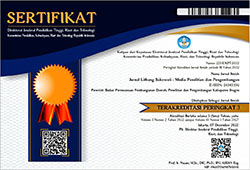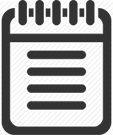Journal Information
Focus and Scope
Publication Ethics
Editorial Team
Peer Reviewers
Open Access Policy
Author Fees
Peer Review Process
Copyright Notice
Plagiarism Policy
Archiving
Author Guidelines
The manuscripts
1. The manuscripts represent academic research in community engagement and empowerment. It should contribute novelty or state-of-the-art for academic development or real-world application or both. The sentences should be plain and straightforward to avoid ambiguities.
2. The article can be written in English or Indonesian in 10-20 pages of A4 paper (1.15 spaces). Articles equipped with the abstract (about 200 to 250 words) and keywords.
Structure of the manuscripts
1. Title. The title should be clear and informative but does not exceed 12 words.
2. Author's names and institutions. The author's names should be accompanied by the author's institutions and an email account, without any academic title.
3. Abstract and keywords. The abstract should be around 200 to 250 words. Please provide the abstract in both English and Indonesian versions. The keywords should be of 3 to 5 words or phrases.
4. Introduction. The introduction consists of several paragraphs that contain: the problem under study, the importance of the problem to be investigated, a review of relevant literature, hypotheses or research questions. It should be written without numbers and/or pointers.
5. Methods. The research method in a quantitative approach covers: a description of the identification and definition of operational variables; population, sample, and sampling techniques; data collection methods and tools; instrument validation; and data analysis methods. The research method in the qualitative approach includes: an explanation of the form of the qualitative approach undertaken; research participants; data collection methods and tools; and data analysis methods.
6. Results and discussion. This section explains the findings of the study and discuss the results with relevant literature.
7. Conclusion. This section concludes and provides practical, theoretical, or policy implications, if any, of the study. The conclusion(s) should be at the same order with ones discussed in the body of the manuscript.
8. References. This section lists only the papers, books, or other types of publications referred in the body of the manuscript. It should include minimal 15 references with 80% of the reference lists is from journal articles and published no less that 10 years. Please use references manager to organize your references, such as: Mendeley, Zotero, Endnote.
9. References, Tables, and Figures should adhere to American Psychological Association Style.
Specific writing format
1. Any table should contain only heading and contents or follow the international standard. Please provide only the top and bottom lines, along with the line(s) that separate the heading and the contents. Note(s) and source(s) should be included underneath the table if appropriate.
2. References should be written in APA Format.
a. For books, the format should follow the following example:
Moran, M., Seaman, J., & Tinti-Kane, H. (2012). How today's higher education faculty use social media. Boston: Pearson.
b. For a book with editor, the format should follow this example:
Ryan, M. J. (2005). Evolution of behavior. Dalam J. Bolhuis & L. Giraldeau (Eds.), The behavior of animals (pp. 294-314). Oxford, England: Blackwell.
c. For journal articles, the format should follow this example:
Mahilum, J. V. (2011).The empty nest: Unvoiced concerns of the elderly. Asian Journal of Health: Social Qualitative Section1(1), 16-30.
d. For internet references, the format should follow the following example:
Clay, R. (2008, June). Science vs. ideology: psychologists fight back about the misuse of research. Monitor on Psychology 39(6), 41. Diunduh dari http://www.apa.org/monitor/ Tanggal 10 Juni 2012
For the indonesian version of this author guidelines, please click here

















